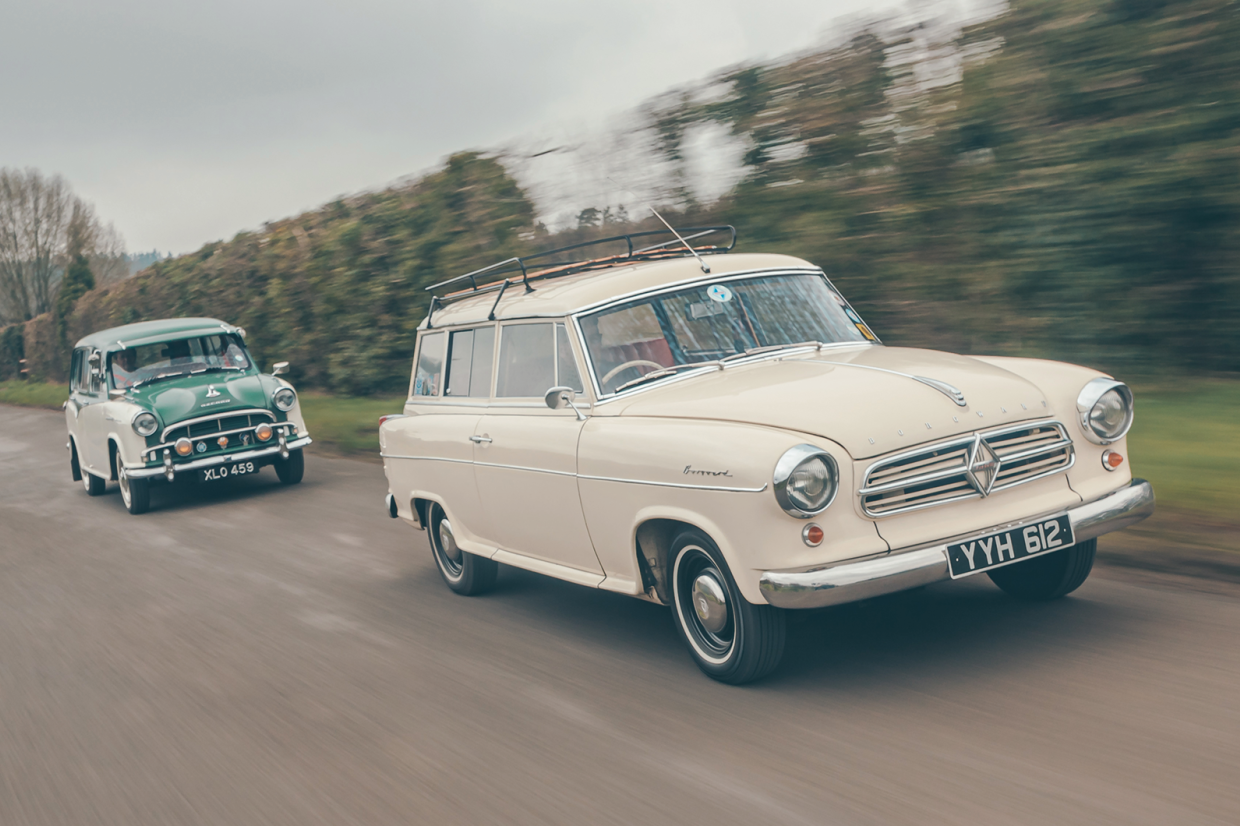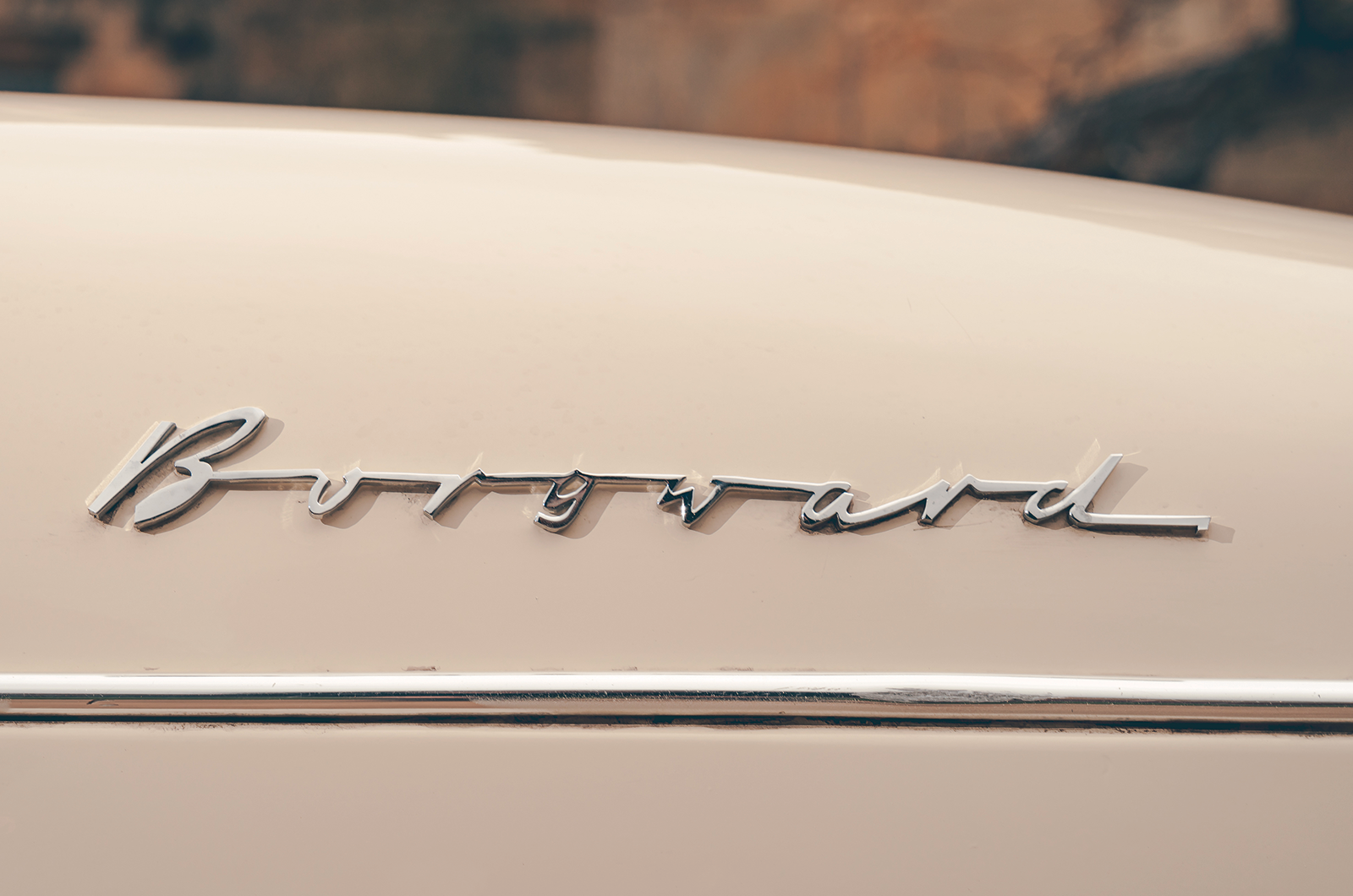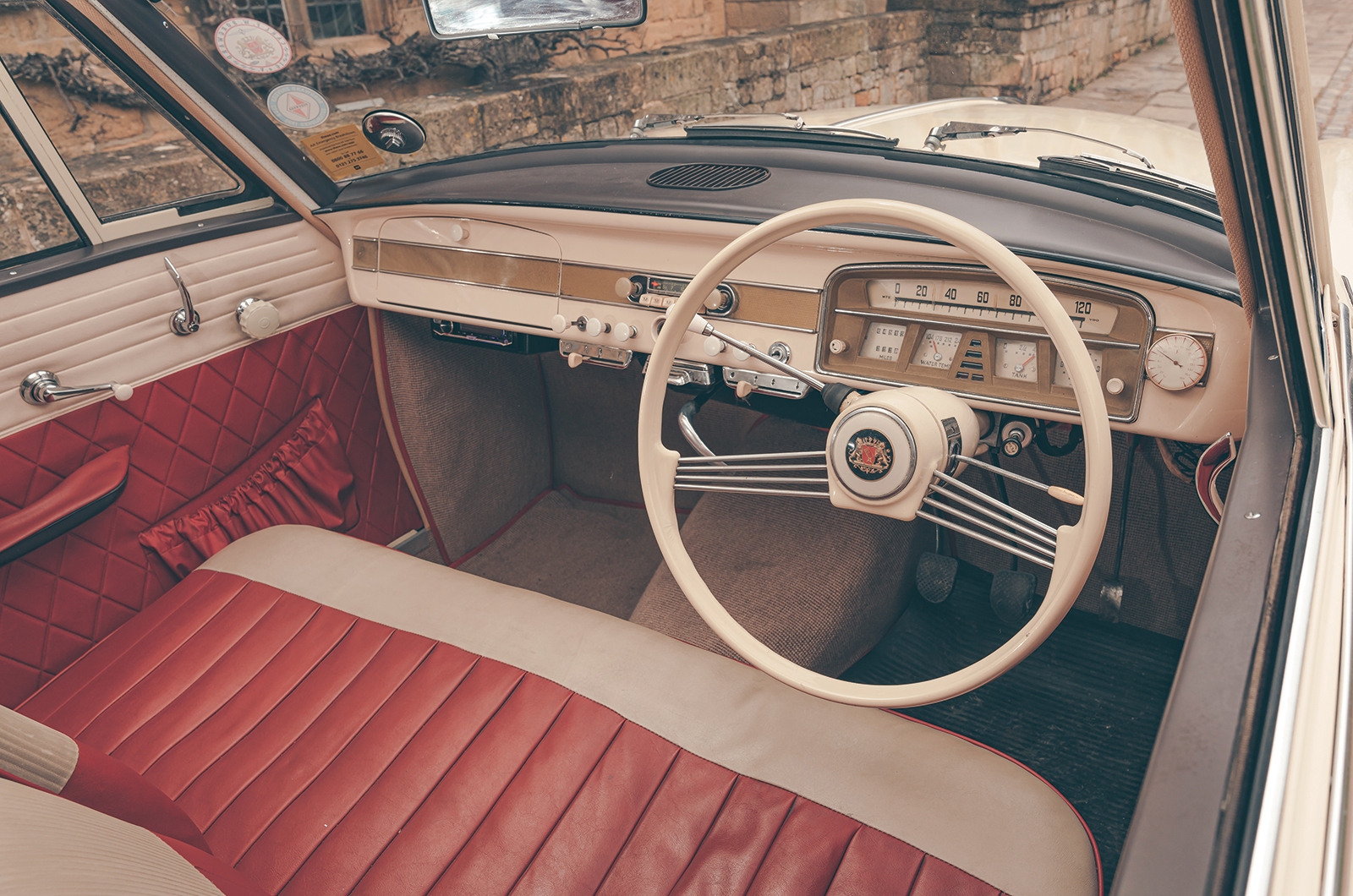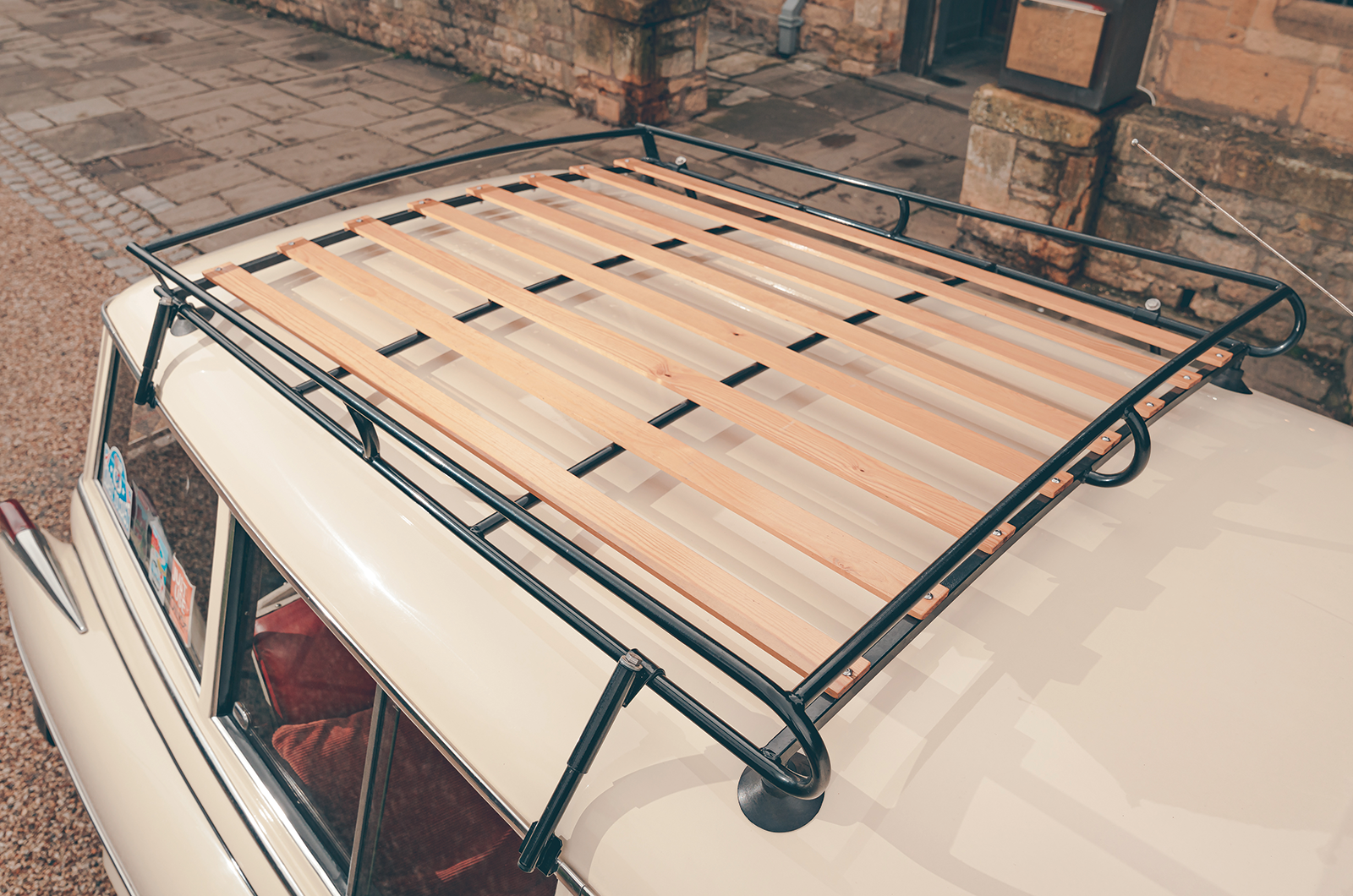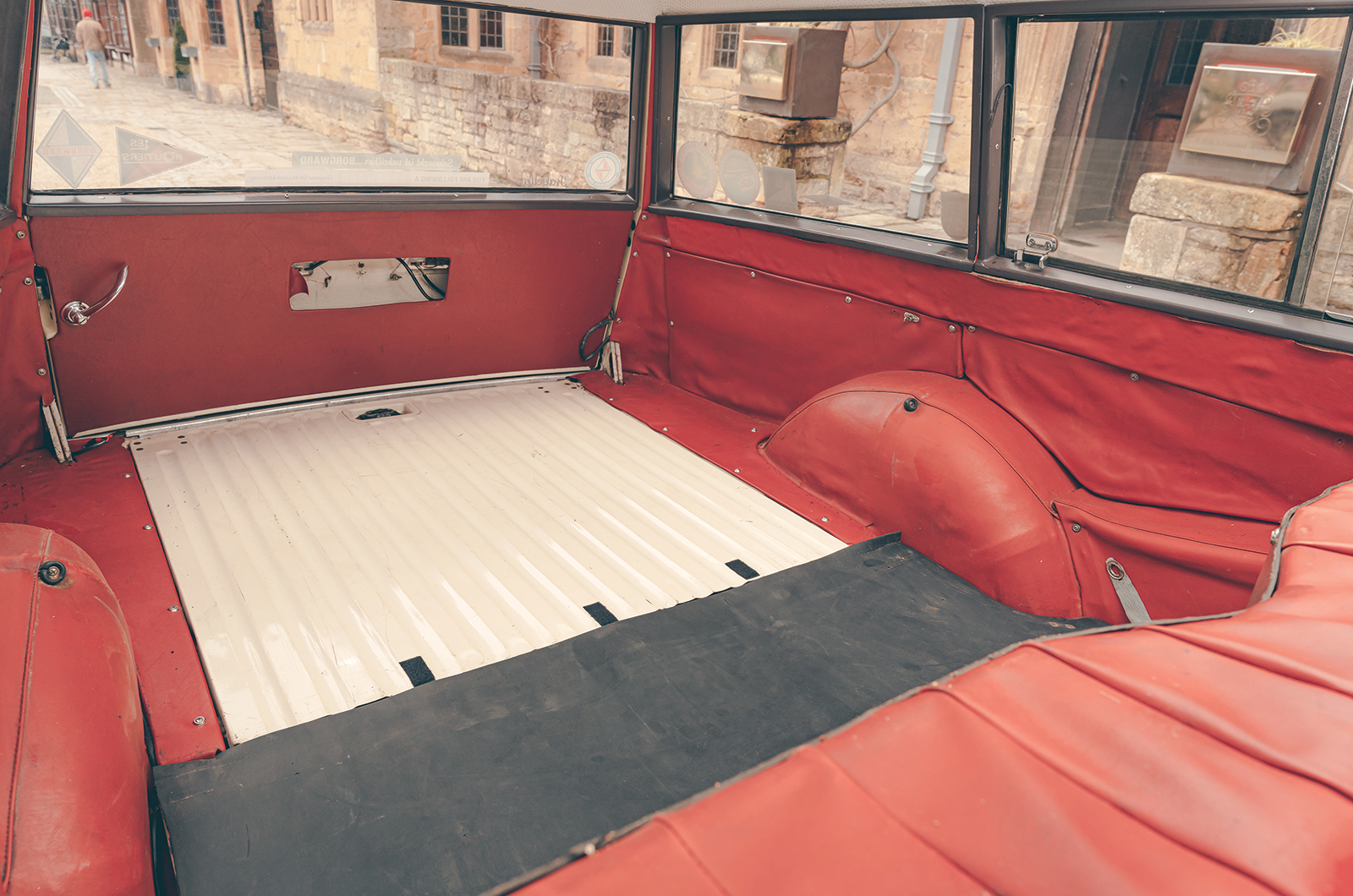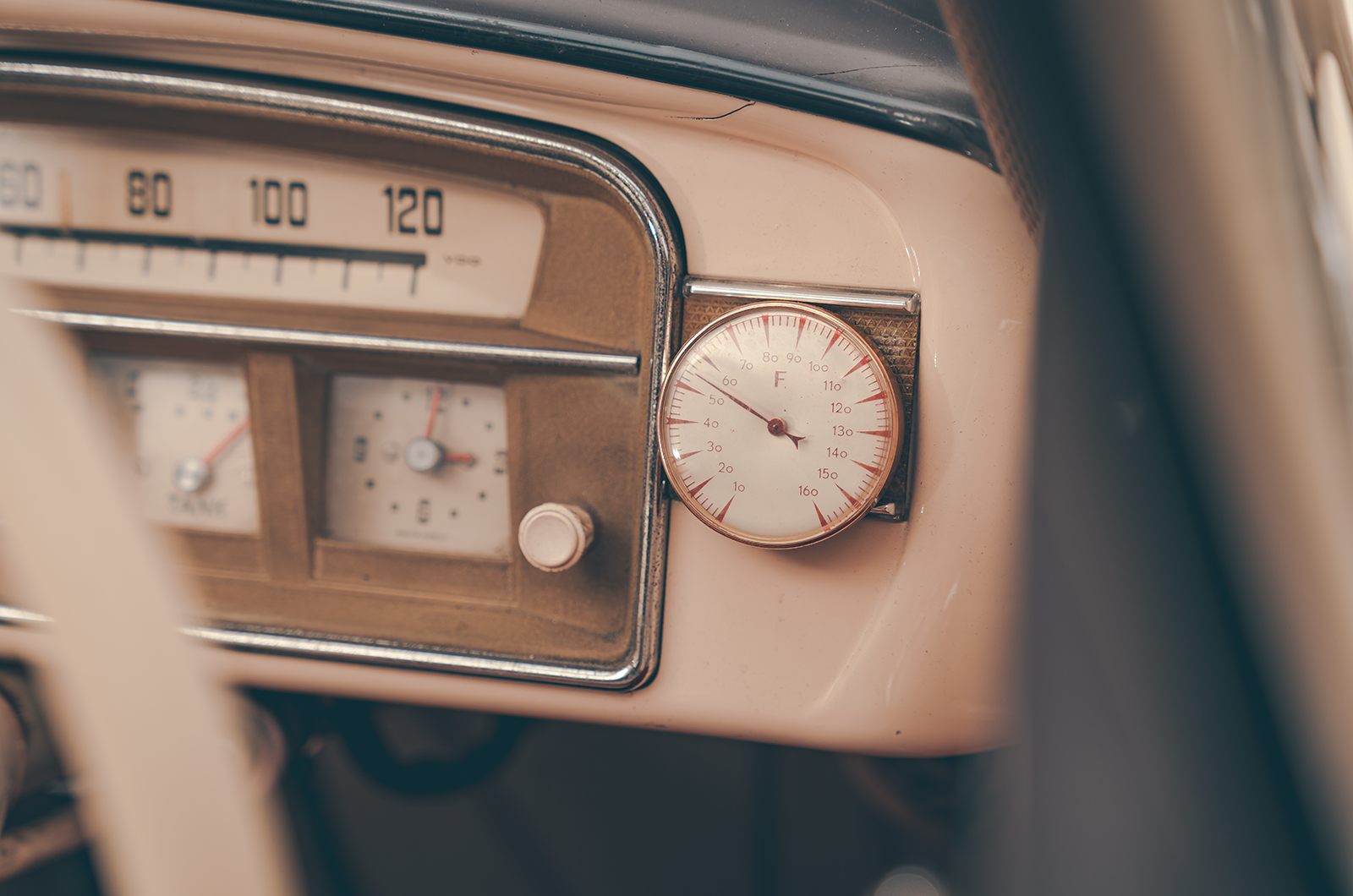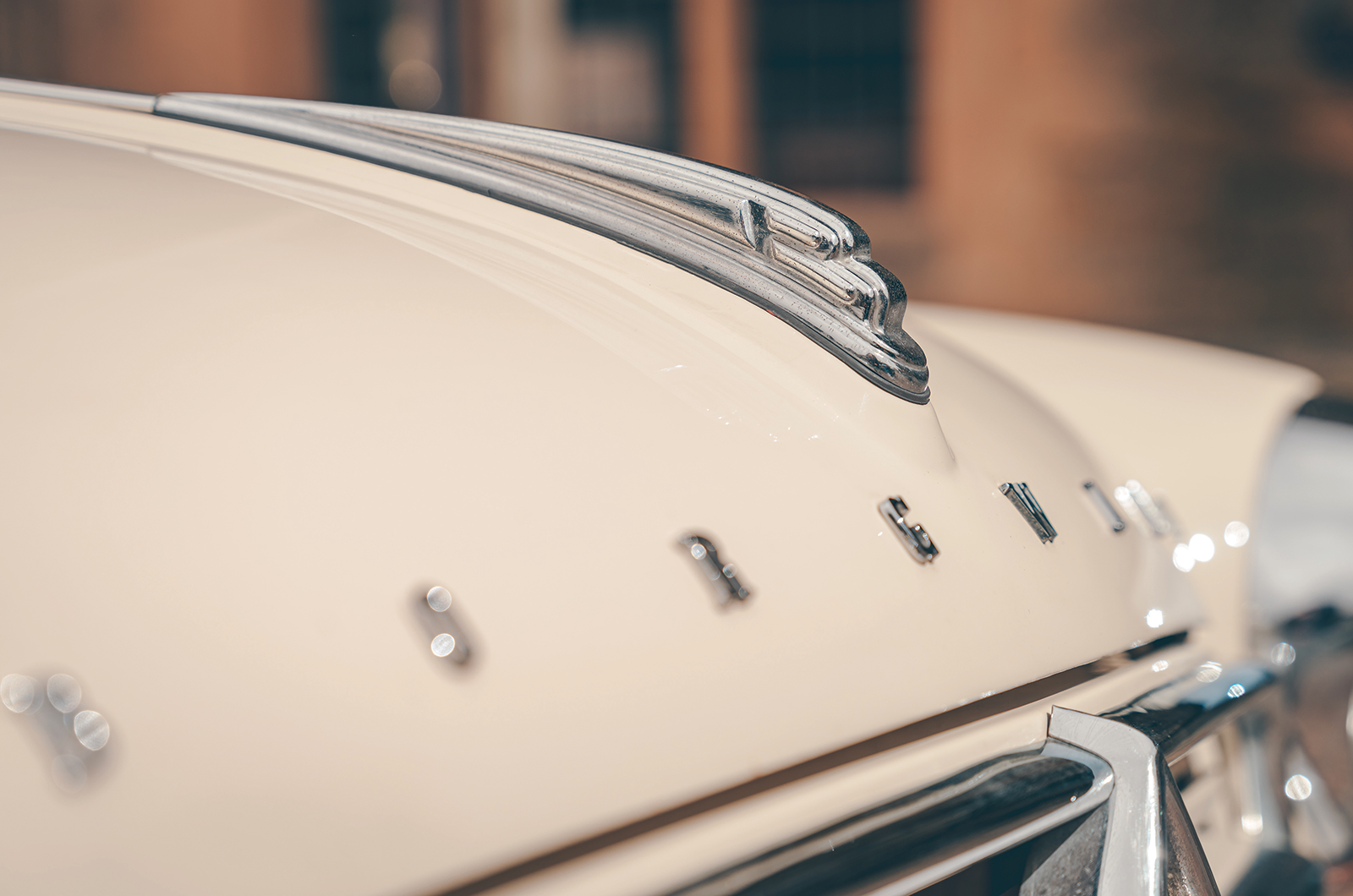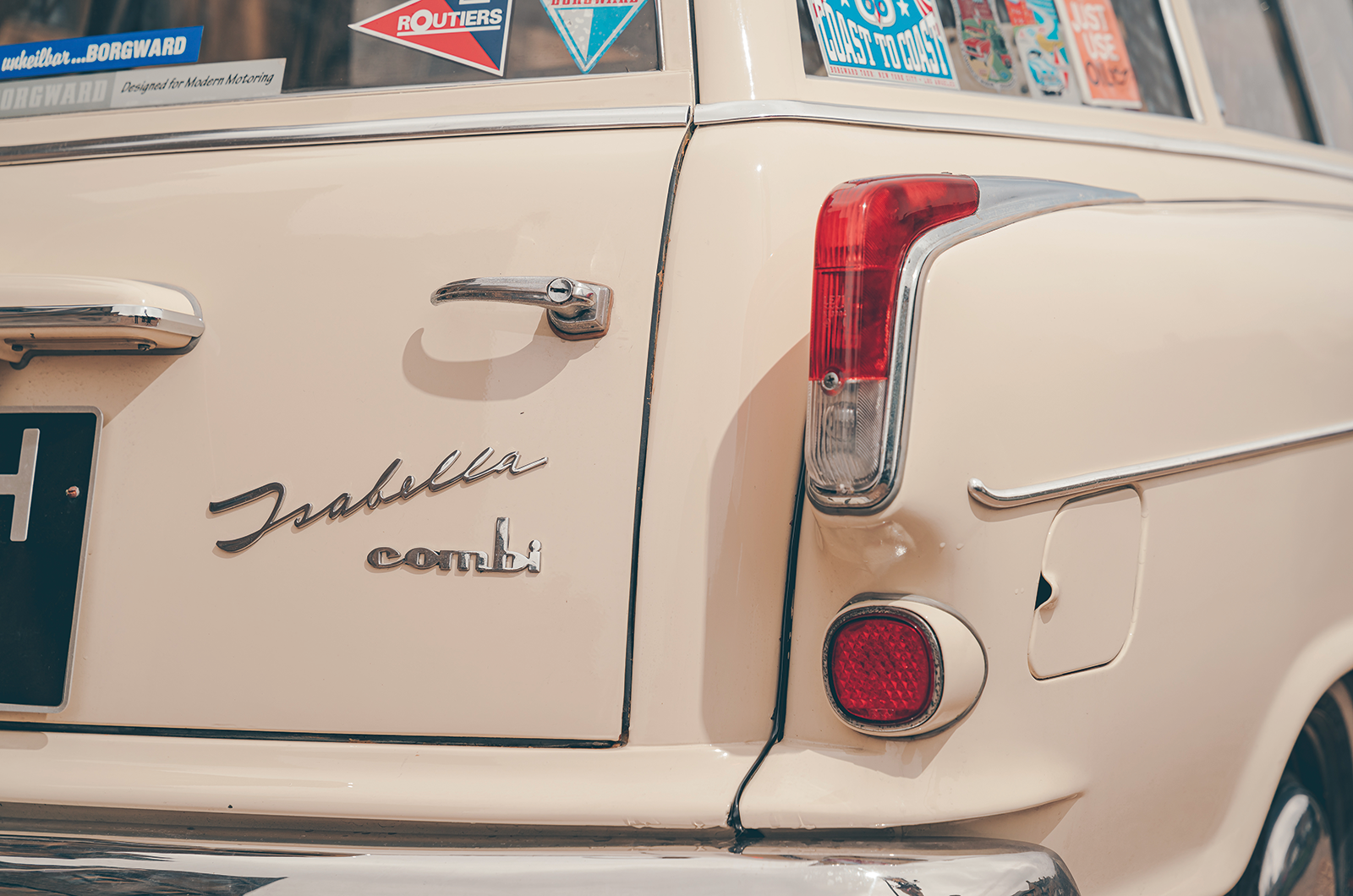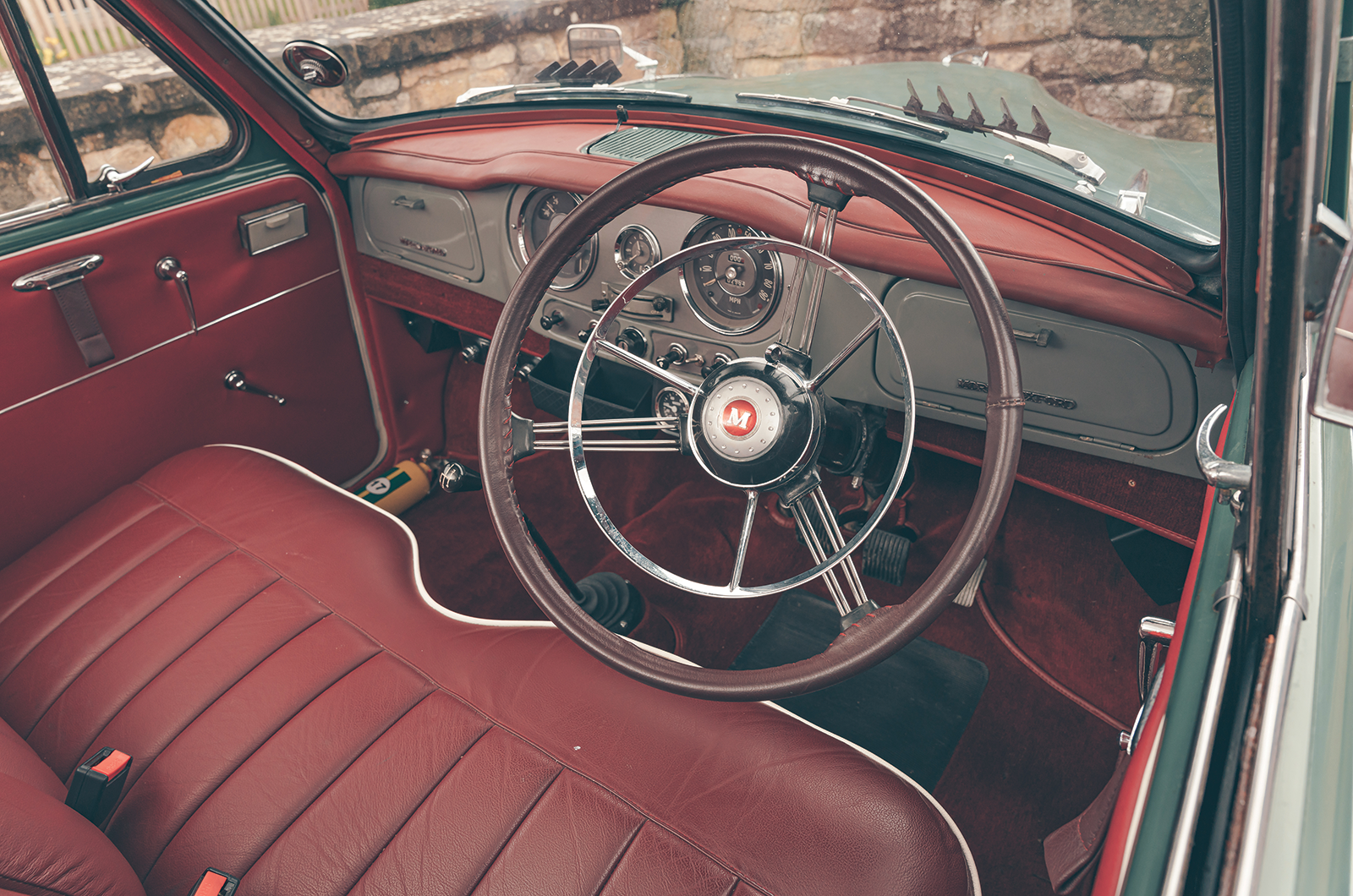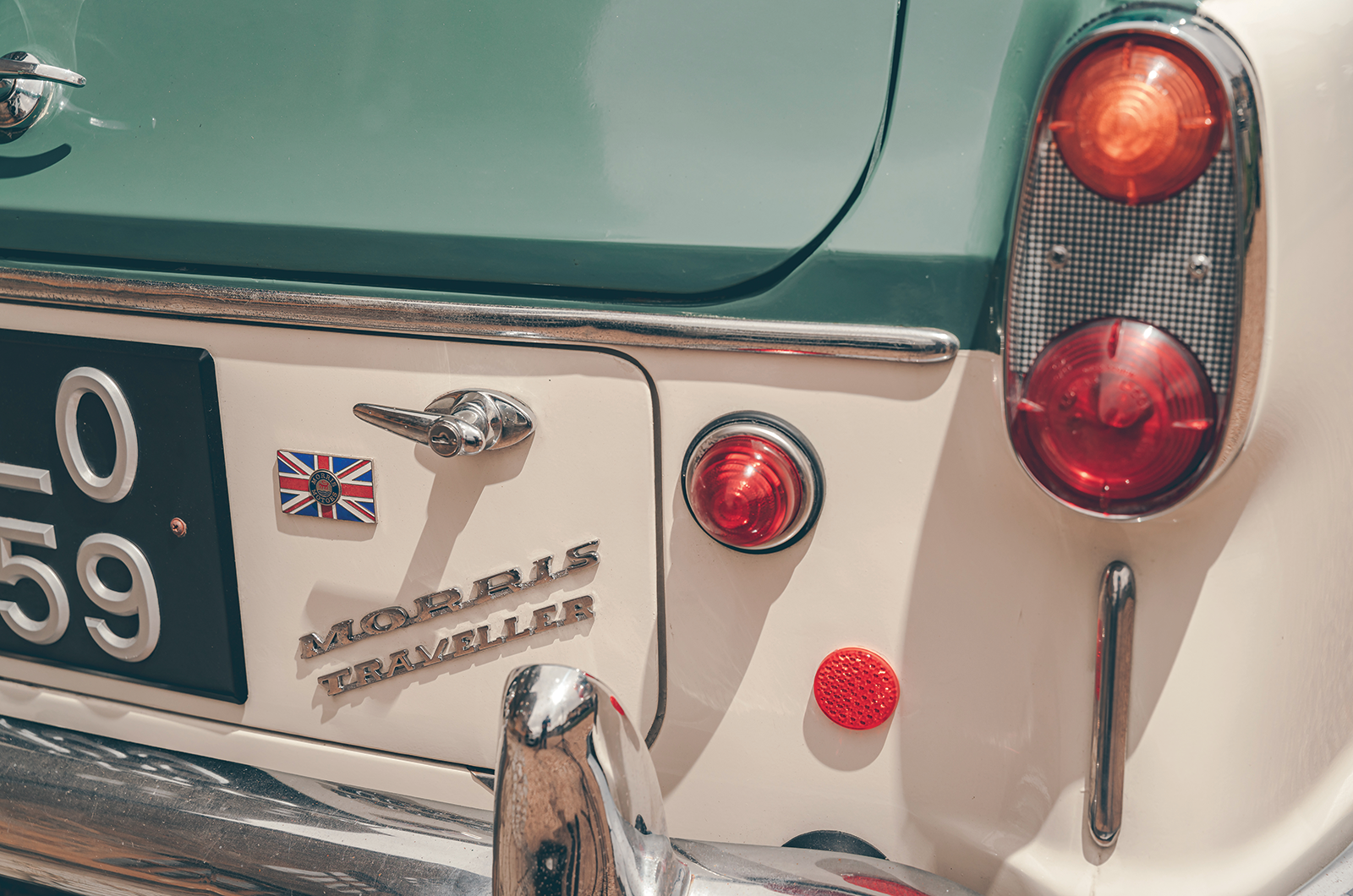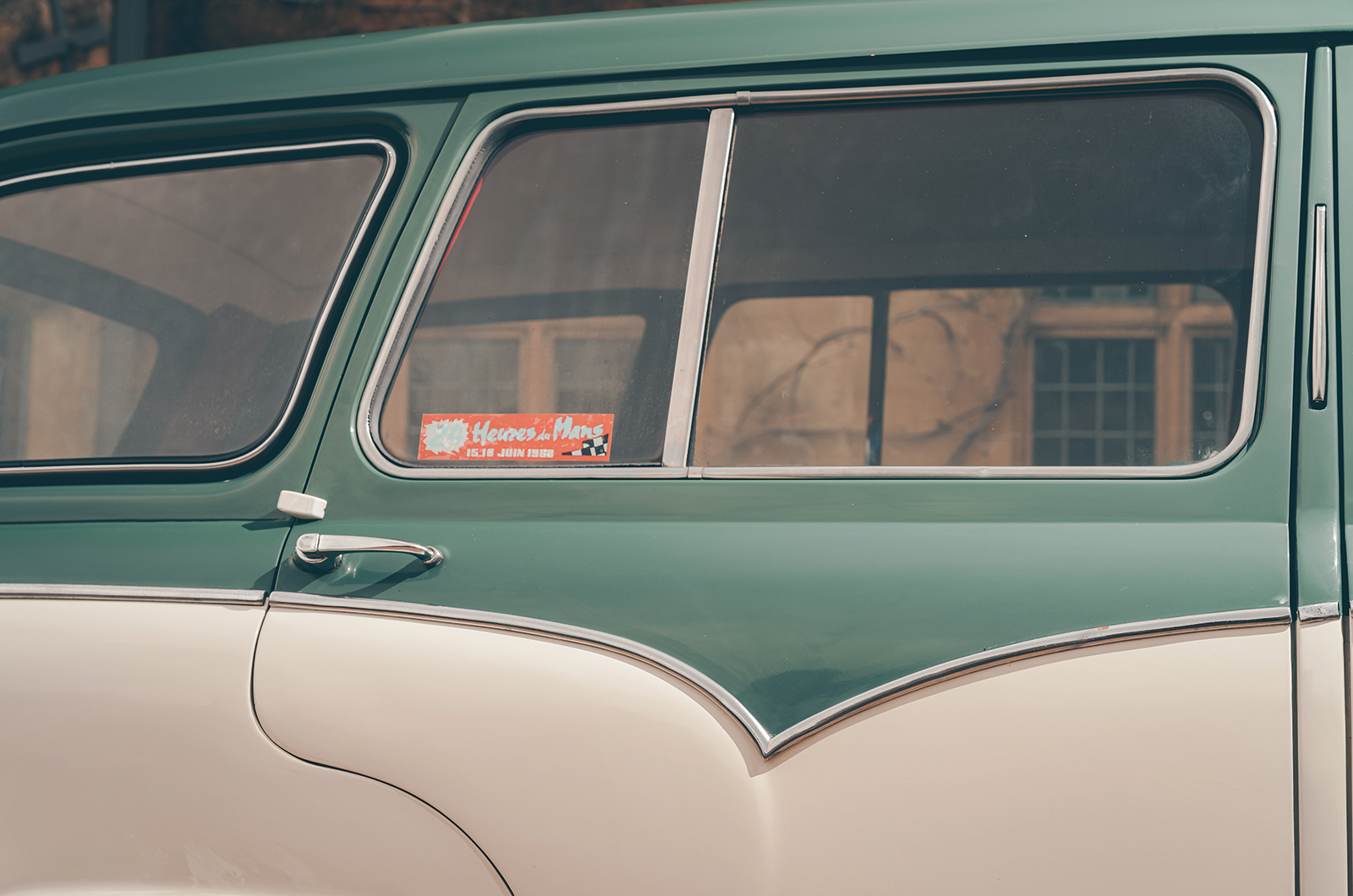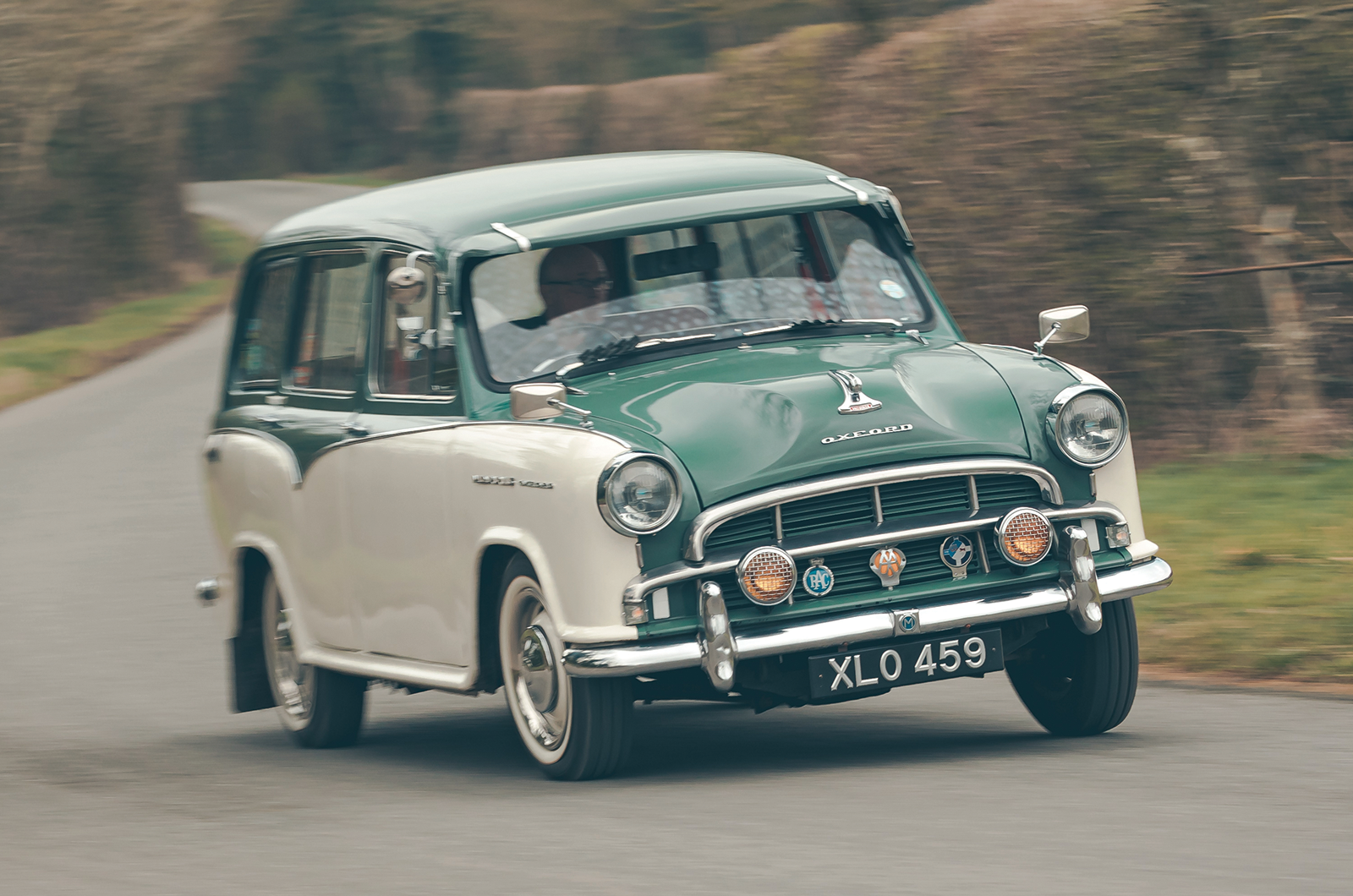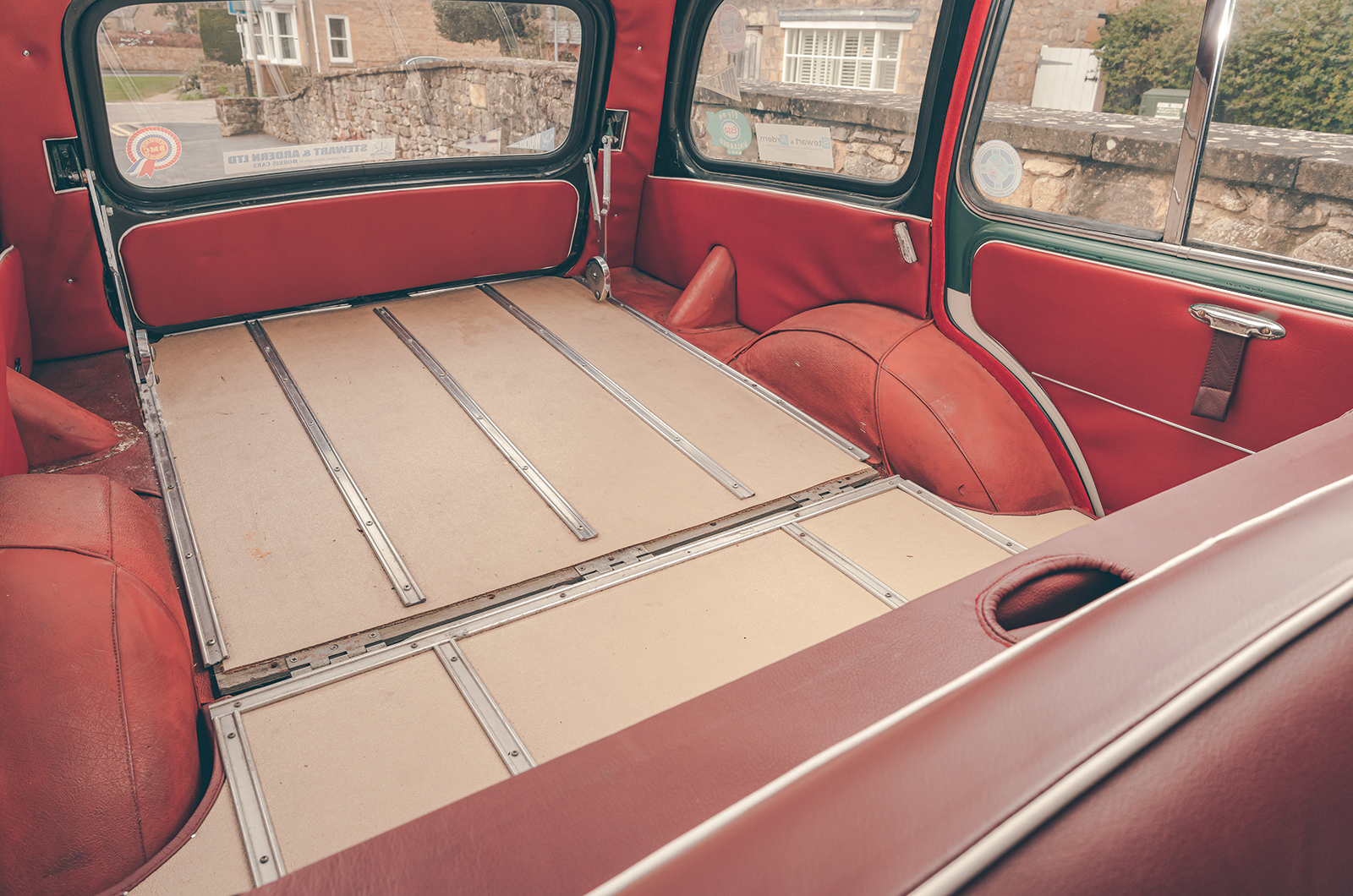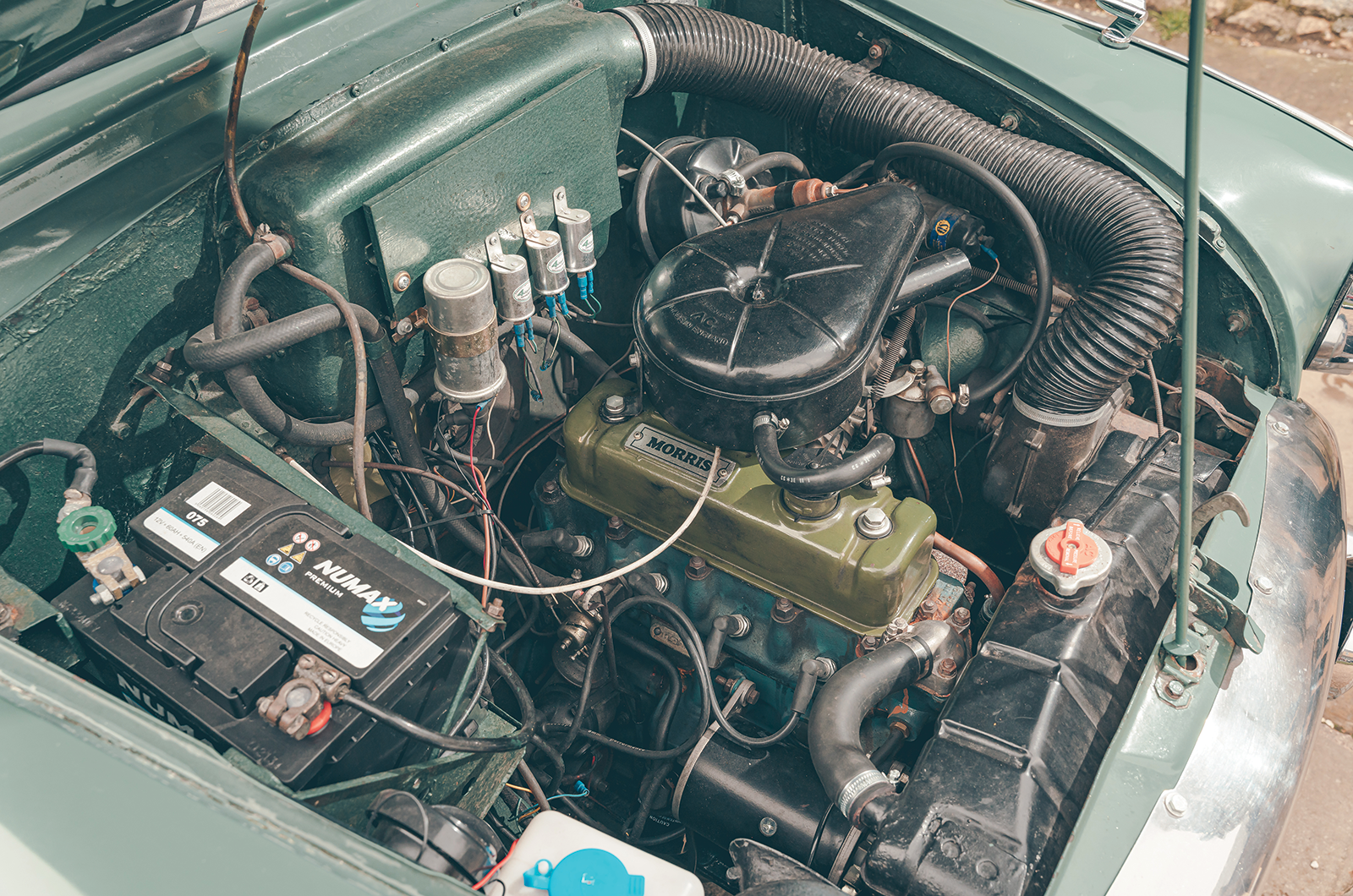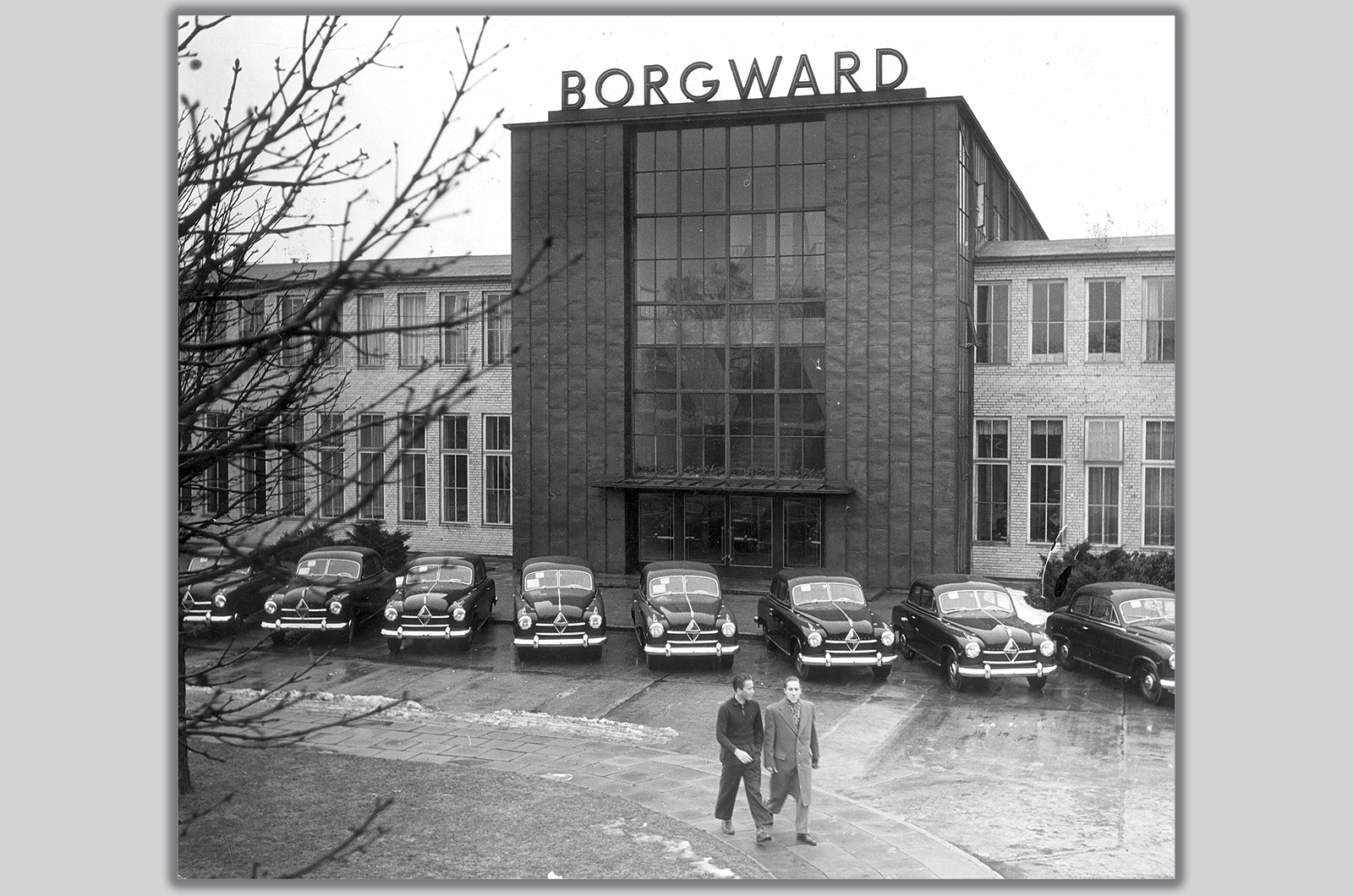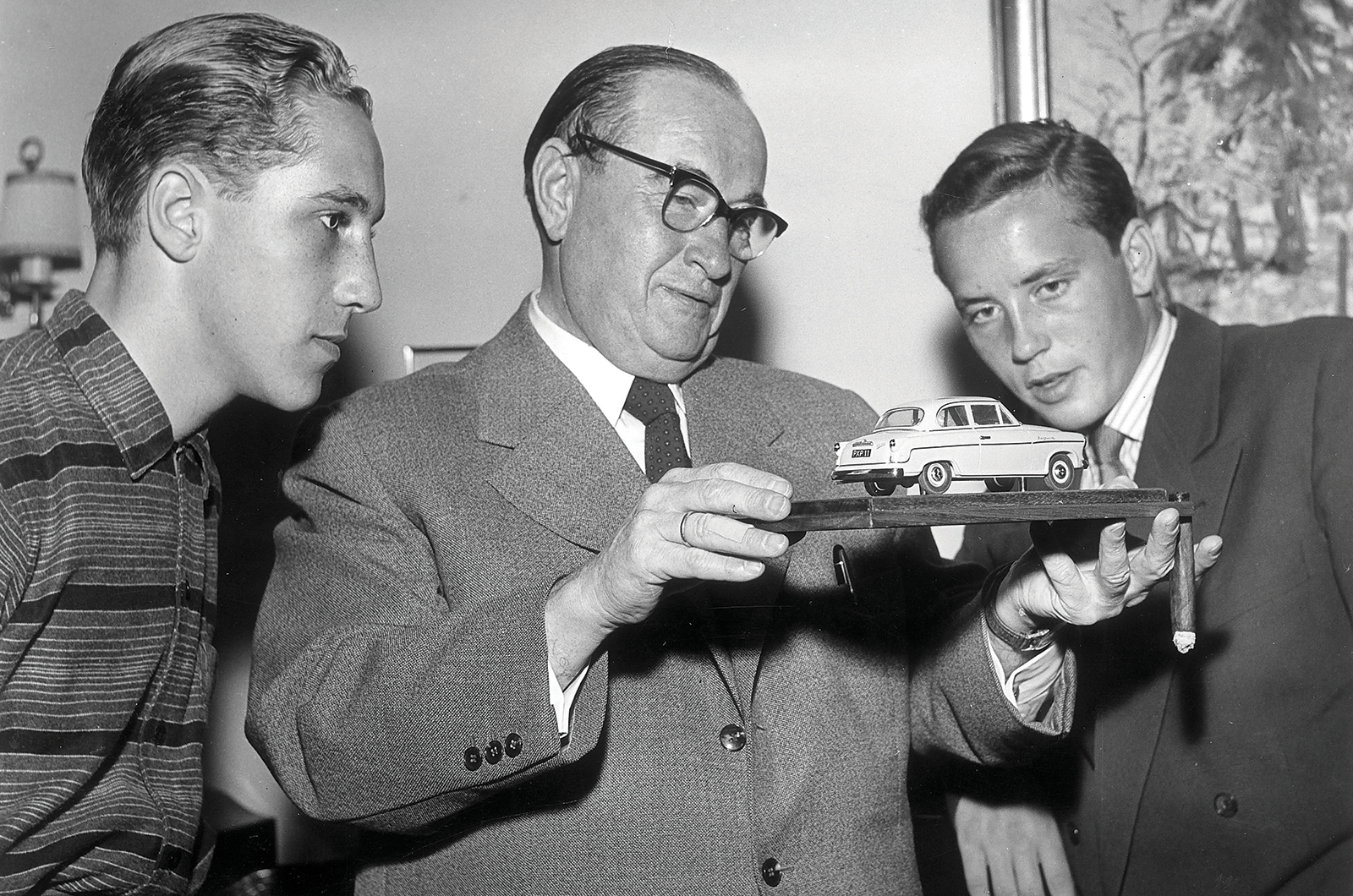The bloodline of the Series IV Traveller didn’t quite align with that of the saloon, though.
It began with the Series II and Series III ‘woodie’ Travellers, the latter adopting the revised saloon’s fluted bonnet and optional two-tone paint.
But in 1957, the Traveller’s timber body was replaced by one made completely from steel – ‘greater strength, lightness, endurance’ – to become the ‘Oxford Traveller Series IV’, as christened by Morris.
The Morris Oxford Traveller Series IV’s slightly stodgy shape is lifted by the two-tone paint finish
Initially fitted with a four-speed, column-change gearbox, in 1958 the Traveller swapped to a floor change, when buyers were again offered the option of two-tone paint.
Martin Hamilton has owned his 1959 car since 2016, its purchase recalling halcyon days when, as a youth, his father owned a similar model.
This Traveller’s optional Almond Green over Old English White paintwork brightens up what would be a rather utilitarian shape – though Vauxhall’s chiefs must have done a double-take when they spotted the Traveller’s deeply fluted bonnet, closely resembling their own design trademark from years before.
The Morris Oxford Traveller has the familiar feel of a Nuffield product
Swooping chrome swage lines separate the colours, and at the rear frame two little fins that jut out next to the tailgate, just ahead of the dual petrol caps, one on each side of the car (lest you forget on which side to fill up).
Around the front, as if to distract from the estate’s rather prosaic form, is an abundance of chrome, including two of the largest overriders I’ve seen on a passenger car.
The spotlights are replacements for period-correct items that were previously fitted, as is the body-coloured windscreen sunvisor.
The Morris Oxford Traveller’s tailgate swings upwards, unlike the Borgward’s side-hinged item
Unlike the Borgward, the Oxford’s top-hinged tailgate opens skyward, to reveal a relatively high-set, but flat (with the seat down), cargo deck, beneath which is a separate hatch to access the spare wheel and jack.
And, with the five-door body, passengers and cargo can enter via the rear doors, too.
Take a seat in the Traveller and you’ll find nothing that would have upset traditional, middle-class sensibilities.
The plump, pleated leather front bench – with an indent for the floor gearshift – in theory seats three, making this a six-seater, but drivers will need to be on intimate terms with their middle passengers every time they change into top.
A chrome strip separates Almond Green from Old English White on the Morris estate
The rear seat scores over the Borgward’s by having a pull-down armrest, but there’s ample legroom in both cars, each of which has a carpeted floor.
You sit high in the Oxford, facing a sprung, three-spoke steering wheel, with a small chromed switch sprouting from its hub to activate the trafficators and rear indicators.
Two large instruments – a multi-use dial and a speedometer – are mounted centrally in the metal-faced dashboard, with a small bank of pull/push controls beneath. (The voltage and water-temperature gauges on this car are non-standard.)
The Morris Oxford Traveller is not fast, but it is a pleasure to drive
Overall, the Oxford’s cabin is a cosy and reassuring place to be for those not brave enough to sample the Borgward’s more Bauhaus-like charms.
Yet driving the Morris is nowhere near as turgid an experience as its design might suggest.
You do feel a bit like an old-school London cabbie peering over the wheel, but the controls are nicely weighted, the pedals sensibly spaced.
The H-pattern gearshift has a longish throw, but each ratio engages with well-oiled precision and you soon find yourself using the ’box more than expected for the fun of it (also out of necessity – performance is sedate), helped by the accompanying sporty rasp from the exhaust as you stretch the B-series’ legs.
The five-door Morris Oxford Traveller is more practical than the Borgward
The gearing is lower than the Borgward’s, though, so at anything above 50-55mph the engine starts to sound busy.
Through the bends, the Oxford’s steering is lower-geared than the Isabella’s, requiring some wheel-twirling, but it’s a more linear and faithful system than the German’s, and one that is surprisingly engaging given the utilitarian remit.
This, complemented by build integrity that is impressive for a 64-year-old motor, makes for a tidy-handling car.
There’s plenty of body roll – not helped when you’re perched so high – which does mark the Traveller down somewhat versus the Isabella, as do its lifeless brakes.
Then again, its live axle is more than a match for the slight waywardness inherent in the Isabella’s swing-axles.
The Morris Oxford Traveller’s ubiquitous B-series engine
It would have taken an individualistic Brit to pin their colours to the Borgward mast at a time when picking homespun products was de rigueur.
But for everyone else, the Morris was a credible riposte – if not particularly for its style or innovation – in the emerging estate-car market, with more than skin-deep appeal.
Images: Max Edleston
Thanks to: Historics Auctioneers; The Cambridge-Oxford Owners’ Club; The Lygon Arms; Graham Mander
What happened to Borgward?
The Borgward factory in Bremen, Germany © Getty
By the mid-’50s, the annual output of the Borgward Group was already second only to Volkswagen in the German market, and by 1959 it had risen to 105,000, with the Isabella range – saloon, Combi and Coupé – accounting for around 38,000 units.
That same year, however, Borgward’s sister company, Lloyd, went to market prematurely with an underdeveloped new model, the Arabella.
Many of them were recalled, at great cost, and Borgward tried valiantly to plug the losses by requesting loans from the banks, as well as the local government. But to no avail.
Carl Borgward with a model of the Isabella saloon © Getty
In January 1961, the Borgward Group’s credit lines were frozen, and the press seized upon the news with an inevitable hammer-blow to sales at home and abroad.
On 4 February 1961, the Bremen Senate took over the entire company and founder Carl Borgward (above, centre) resigned.
BMC, among others, showed an interest in buying Borgward Group, but while holding out for the best deal, the firm collapsed in September that year.
Carl Borgward died a broken man on 28 July 1963.
Factfiles
Borgward Isabella Combi
- Sold/number built 1954-’61/202,862 (all Isabellas)
- Construction steel monocoque
- Engine iron-block, alloy-head, ohv 1493cc ‘four’, single downdraught carburettor
- Max power 60bhp @ 4700rpm
- Max torque 79lb ft @ 2000rpm
- Transmission four-speed manual, RWD
- Suspension independent, at front by double wishbones rear swing-axles, radius arms; coil springs, telescopic dampers f/r
- Steering worm and peg
- Brakes drums
- Length 14ft 4in (4390mm)
- Width 5ft 7in (1705mm)
- Height 4ft 11in (1500mm)
- Wheelbase 8ft 6in (2600mm)
- Weight 2403lb (1090kg)
- Mpg 25 (est)
- 0-60mph 18.5 secs
- Top speed 93mph
- Price new £1269 (1960)
- Price now £13-20,000*
Morris Oxford Traveller Series IV
- Sold/number built 1957-’60/58,117 (all Series III saloons & Series IV Travellers)
- Construction steel monocoque
- Engine all-iron, ohv 1489cc ‘four’, single carburettor
- Max power 55bhp @ 4400rpm
- Max torque 78lb ft @ 2400rpm
- Transmission four-speed manual, with no synchromesh on first, RWD
- Suspension: front independent, by wishbones, torsion bars rear live axle, semi-elliptic springs; telescopic dampers f/r
- Steering rack and pinion
- Brakes drums
- Length 14ft 1in (4292mm)
- Width 5ft 5in (1651mm)
- Height 5ft 3in (1600mm)
- Wheelbase 8ft 3in (2514mm)
- Weight 2659lb (1206kg)
- Mpg 25 (est)
- 0-60mph 29 secs
- Top speed 75mph
- Price new £1011 17s (1958)
- Price now £10-13,000*
*Price correct at date of original publication
Enjoy more of the world’s best classic car content every month when you subscribe to C&SC – get our latest deals here
READ MORE
Some diamonds aren’t forever: Borgward Hansa 2400 Pullman
Ford Zephyr MkII Farnham estate: getting the wagon rolling
Estates of the nations: Fiat vs Volvo vs Triumph
Simon Hucknall
Simon Hucknall is a senior contributor to Classic & Sports Car
